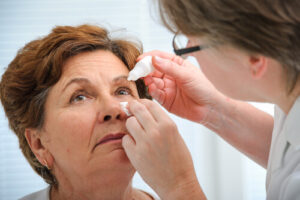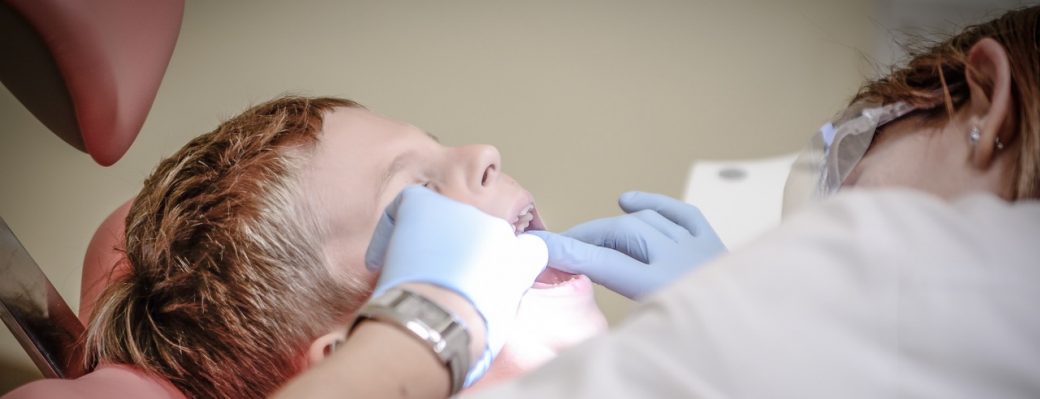Navigating eye care, especially when dealing with fungal infections, can lead one to consider over-the-counter antifungal eye drops as a viable option. Understanding how these drops work and their potential benefits becomes crucial with various treatments available. This article delves into the world of over-the-counter antifungal eye drops, offering insights into their use and effectiveness and explaining what you should know before selecting this treatment path.
Join us as we explain this option, providing clarity and guidance for those seeking relief from fungal eye infections.
Understanding Fungal Eye Infection Causes
Fungal eye infections, which stem from various environmental sources and personal habits, pose challenges to eye health. While less common than bacterial or viral infections, these infections can lead to serious complications without prompt and appropriate intervention.
- Environmental Exposure: Fungi found in soil and plants and decomposing organic matter can enter the eye directly through contact, especially if the eye’s protective barrier is compromised.
- Contact Lens Mismanagement: Improper cleaning or over-wearing contact lenses creates a conducive environment for fungal growth, increasing infection risks.
- Compromised Immunity: Individuals with weakened immune systems, whether from disease, medication, or health conditions, are more susceptible to developing fungal eye infections.
- Injury to the Eye: Trauma or injury to the eye can make it more vulnerable to infection by breaking down its natural defensive barriers against fungi.
- Symptom Recognition and Treatment: Identifying symptoms that mimic allergic reactions—such as redness, pain, discharge, and blurred vision—and seeking timely medical intervention with antifungal treatments are key steps in managing the infection effectively.
Symptoms of Eye Fungal Infections
Although eye fungal infections are less common than bacterial or viral eye conditions, they can cause significant discomfort and potentially lead to more serious health issues if not identified and treated promptly. Recognizing the symptoms of these treated fungal infections is critical for early intervention and effective management.
- Redness and Irritation: One of the first signs of a fungal eye infection is often redness around the eye and eyelid, accompanied by persistent irritation.
- Blurred Vision: Infection can lead to changes in vision, including blurriness, which might worsen without treatment.
- Pain and Discomfort: Affected individuals may experience a range of painful sensations, from mild discomfort to severe pain in and around the eye.
- Discharge: Unusual discharge from the eye, which may be watery or, in some cases, thicker, can indicate an infection.
- Sensitivity to Light: A marked increase in sensitivity to light, causing discomfort or pain when exposed to bright environments.
- Swelling: The eyelids and surrounding tissues might swell, contributing to the overall discomfort and potential vision obstruction.
The Role of Over-the-Counter Antifungal Eye Drops in Treatment

Over-the-counter (OTC) antifungal eye drops play a pivotal role in treating fungal eye infections, offering a convenient and accessible option for early intervention. While not all fungal infections can be treated with OTC options, for those who can, these eye drops provide an essential means of managing symptoms and treating infections.
Immediate Accessibility: OTC antifungal medications in eye drops are readily available, allowing for prompt treatment initiation at the first sign of infection symptoms.
Symptom Relief: These eye drops can relieve common symptoms such as redness, itching, and discomfort, improving the patient’s quality of life during recovery.
Infection Control: By directly targeting fungal organisms, antifungal eye drops help control and reduce the spread of infection, potentially preventing more serious complications.
Complementary Treatment: OTC antifungal eye drops may serve as the primary treatment for less severe infections. In more serious cases, they can complement prescription medications, providing an added defense against the infection.
Preventative Measure: In some instances, antifungal eye drops are used as a preventative measure, especially after eye surgery or an injury, to protect against potential fungal infections.
Treatment for Fungal Keratitis: A Comprehensive Approach
Fungal keratitis, a serious eye infection affecting the eye’s outer layer, can lead to significant discomfort and, if untreated, vision loss. Often linked to eye injuries or the prolonged wear of contact lenses, this condition requires prompt treatment to prevent complications.
Over-the-counter antifungal medications may relieve mild irritation, but more severe cases necessitate a targeted approach with prescription eye drops or other antifungal medications. Topical natamycin and amphotericin B are commonly used to treat infections, directly combating the fungus responsible for keratitis.
It’s crucial for individuals who wear contact lenses to maintain a strict hygiene regimen to avoid exacerbating the condition. Additionally, an allergic reaction to topical medication underscores the importance of consulting an eye doctor for a tailored treatment plan.
This might include switching to a different antifungal drug or considering eye surgery to repair any damage. Protecting the eye’s delicate protective lining, both inside and out, is essential for healing and preserving sight.
How to Choose the Right Antifungal Eye Drops
Choosing the best antifungal eye drops is crucial in effectively treating fungal eye infections and ensuring optimal eye health. With various products available, making an informed decision requires understanding the specific factors that should influence your choice. By focusing on these key considerations, you can select an antifungal eye injury treatment that addresses your needs, promotes healing, and minimizes the risk of complications.
Identify the Infection
Understanding the type of fungal infection you’re dealing with is paramount. Different fungi may require different antifungal agents, so a correct diagnosis is crucial.
Consult a Healthcare Professional
Before selecting over-the-counter antifungal eye drops, consult with an eye care specialist. Based on your diagnosis, they can recommend the most effective treatment.
Active Ingredients
Look for eye drops with active ingredients known to target the specific fungus causing the infection. This information can often be found on the product label or by consulting a pharmacist or healthcare provider.
Safety and Side Effects
Review the potential side effects and safety profile of the eye drops. Some products may cause irritation or allergic reactions in certain individuals.
Ease of Use
Consider the dosage and application frequency. Some eye drops may require more frequent application, impacting adherence to the treatment regimen.
Brand Reputation and Reviews
Research the brand and read user reviews when available. Feedback from other users can provide insight into the product’s effectiveness and overall experience.
Tips for Using Over-the-Counter Antifungal Eye Drops Effectively

Using over-the-counter antifungal eye drops correctly is key to treating fungal eye infections. While these medications offer a convenient route to treatment, their success largely depends on correct usage and adherence to your doctor’s specific guidelines. By following a few essential tips, you can enhance the effectiveness of the treatment and ensure a smoother recovery process for your eyes.
- Follow the Instructions: Carefully read and adhere to the product’s instructions. This includes dosage, frequency, and duration of use to ensure optimal effectiveness.
- Maintain Hygiene: Before applying the eye drops, wash your hands thoroughly to prevent the introduction of additional bacteria or fungi to the infection site.
- Avoid Touching the Dropper Tip: To prevent contamination, keep the dropper tip clean and avoid contact with your eye, eyelids, or any other surface.
- Do Not Share Eye Drops: Sharing eye drops can spread infection. Ensure that you only use your antifungal eye drops.
- Complete the Treatment Course: Even if symptoms improve, continue using the eye drops for the full prescribed period to prevent the recurrence of the infection.
In wrapping up, over-the-counter antifungal eye drops offer a convenient and accessible solution for those battling fungal eye infections. By understanding the options available and how to use them effectively, individuals can take an active role in their eye and skin health care. However, it’s crucial to recognize when professional advice is needed to ensure the best outcome. Whether you’re exploring treatment options or seeking more about antifungal eye care, remember that taking informed steps toward healing is key to maintaining your vision health.
References
Antifungal Eye Drops: Treatment for Fungal Eye Infections
https://myvision.org/eye-health/antifungal-eye-drops/
Antifungal Eye Drops (Uses, Types & Side Effects)
https://www.visioncenter.org/resources/antifungal-eye-drops/
Treatment for Fungal Eye Infections | Types of Diseases
https://www.cdc.gov/fungal/diseases/fungal-eye-infections/treatment.html
Natamycin (Ophthalmic Route) Proper Use
https://www.mayoclinic.org/drugs-supplements/natamycin-ophthalmic-route/proper-use/drg-20064987?p=1
Natacyn Ophthalmic (Eye): Uses, Side Effects, Interactions
https://www.webmd.com/drugs/2/drug-9361/natacyn-ophthalmic-eye/details


